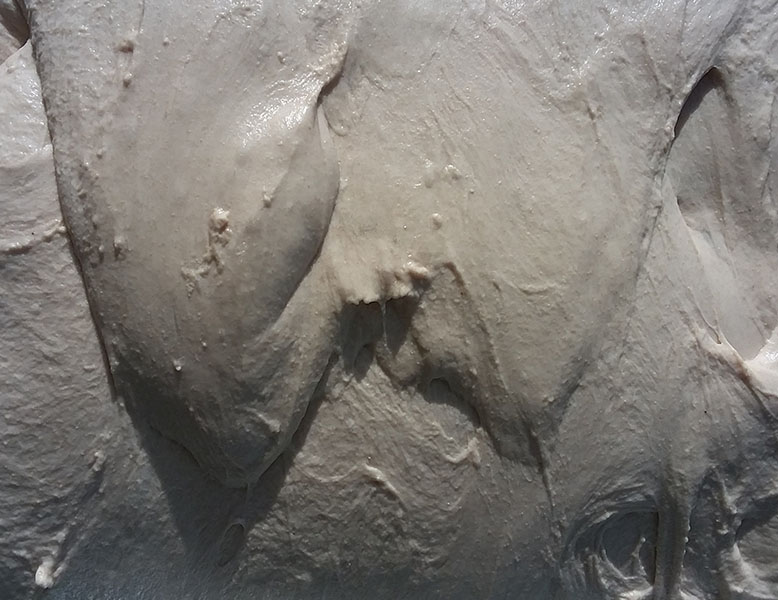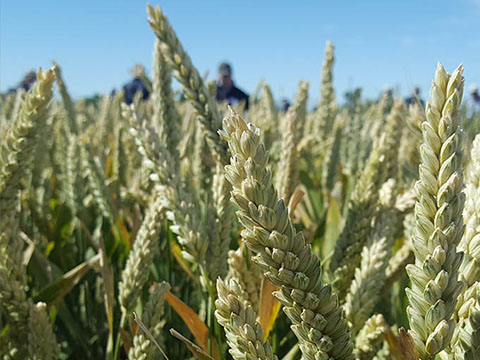
About Wheat
Ötzi
This poor guy was running from someone high in the Alps about 5,300 years ago before being shot with an arrow from behind and thumped over the head with a blunt object. He was frozen in place until 1991 when hikers discovered his well-preserved body. He's nicknamed Ötzi the Iceman and they've determined that a few hours before his demise he snacked on some einkorn wheat bread. Ötzi is the oldest mummy discovered to date, and wheat is part of his story just like it was for mummies found in Egyptian tombs where loaves of bread were left to feed the spirit into the afterlife.
Wheat is a remarkable food with a history that is so intertwined with human history that it is hard to take humans out of its story. And gluten, the much-maligned gluten, provides the best answer as to why this is so.
Gluten
Most people don’t realize that wheat doesn’t contain gluten. In fact, to make gluten you need humans. You need wheat, too, to be sure, but the magic of gluten cannot be revealed without our help. What wheat does have that is so important is gliadin and glutenin – the yin and the yang – two proteins that possess the opposing, yet complimentary, qualities of contraction and expansion.
The gifts we humans have to give to wheat are our ingenuity and our hands; ingenuity which conceives of, and constructs, something to grind the wheat seeds into flour so that we can add water and make a paste; and our hands which knead the paste into a dough, a dough which, thanks to wheat’s gifts of glutenin and gliadin, develops into a substance that is both elastic and extensible – gluten.
In essence, gluten forms the lungs of bread dough. Fermentation, or CO2 gases which result from yeast fermentation, breathes air into those lungs. The lungs can function because of the two gluten proteins, and the fact that the lungs exist at all is thanks to human participation.
But this isn’t the human participation that some people have expressed concern about. The human activity, related to wheat, that has drawn the most scrutiny has more to do with our manipulation of wheat’s gene pool through breeding. If someone expresses concern about “modern wheat hybrids” at the farmer’s market I begin with a friendly challenge. I challenge them to find one non-hybrid food at the market and show it to me. The truth is that not one carrot, onion, asparagus spear, apple, tomato, cow,chicken or pig hasn’t been bred by well-intentioned human beings to alter their size, shape, color,yield, taste or nutritive value.
Wheat Breeding
How is wheat bred today? Much like it has been bred for more than a hundred years. Wheat is self-fertile, containing both male and female reproductive organs. To cross one variety of wheat with another the anthers are pulled out of the host to take away the plant’s ability to pollinate itself. A cellophane slip is placed over the flowering head of the plant and pollen from a different wheat plant is sprinkled onto the host, inside the cellophane slip. Seeds from this plant, after it matures, will grow into a wheat that possesses genetic features from both parents.
There is nothing sinister about the process. Genetically modified wheat, which an alarming number of people believe exists, does not - not in farmers’ fields, anyway. Tests are being conducted but, as opposed to corn, soy, rice, tomatoes, potatoes and dozens of other foods which are commonly found on our dinner plates, GMO wheat is not commercially available anywhere in the U.S.
There is also a perception that all wheat has been bred, over the last 50 years, to contain ever-increasing amounts of gluten proteins. But the facts don’t support this. You can take this for what its worth, but I’ve spoken to more than one old-time baker during my 30 years in the business who volunteered that the wheats of their day were much stronger (baker-speak for higher in gluten) than the modern varieties. This could be explained by the fact that, where the gluten protein quality of wheat is concerned, environmental factors usually trump genetic factors. In other words, factors like soil quality, crop rotations, amount and timing of rain, etc. play at least as large a part in determining protein make-up in wheat as the genetic characteristics of any particular variety.
What is interesting is that for so many bakery applications, high gluten flour in NOT desired. If you insist on buying big, fluffy breads in the supermarket, you can count on a hefty gluten content, but flour for cakes, muffins, scones, crackers – even most artisan breads is typically moderate to low in gluten protein. Hundreds of varieties of wheat are grown across the country, each with its own set of characteristics, each farmer with his/her own methods.
The genome of wheat is 5 times larger than the human genome, so an infinite number of genetic variations are possible. Humans have been eating wheat for at least 23,000 years, domesticating it for 10,000 years. Wheat, itself, is millions of years old. Problems arise when too broad a stroke is used to paint something as complex as wheat. If you don’t feel well when you eat wheat then you have my sympathy.But wheat, for the vast majority of people in the U.S. and around the world, can be an important and extremely nutritious part of our diets if it is grown and prepared in a way that respects it for what it is – a staff of life.



